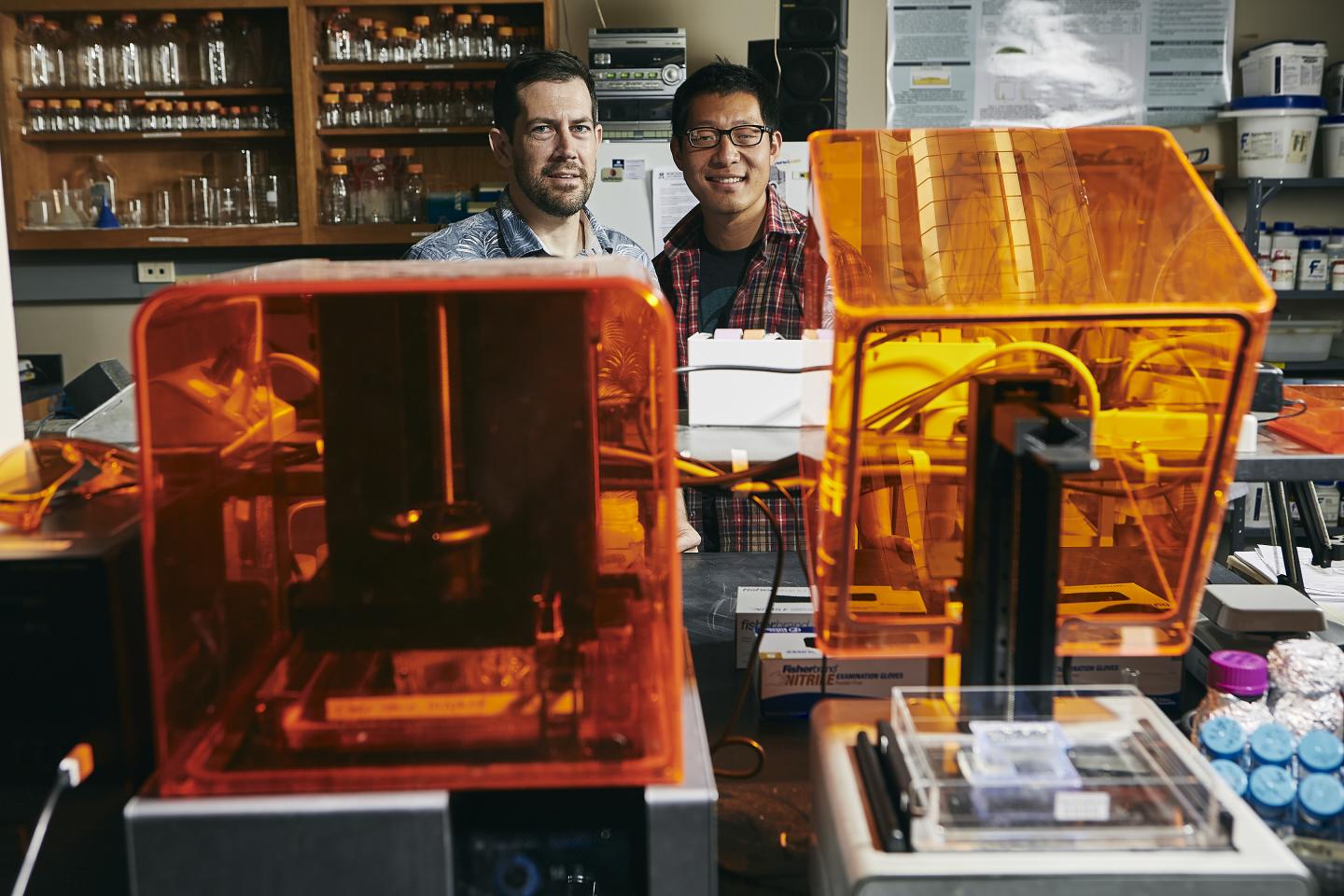
Credit: MSU Photo by Adrian Sanchez-Gonzalez
BOZEMAN — As enthusiasm grows for 3-D printing, hailed by hobbyists and high-tech industry as a new frontier in the creation of custom products, researchers at Montana State University are using the technology for another purpose: studying bacteria.
Backed by a $679,000 grant from the research wing of the U.S. Army, the research could lead to new insights into how microbial communities assemble to create antibiotic-resistant infections on hip implants or remove pollution from groundwater, among other things.
“It’s exciting,” said project co-leader James Wilking, assistant professor in the Department of Chemical and Biological Engineering in MSU’s Norm Asbjornson College of Engineering. “We’re pushing the limits of this technology.”
The project is riding a wave of recent advances in 3-D printers that use lasers to congeal water-based liquids. The result, according to Wilking, is objects that have the consistency of Jell-O and resolution of one micron — roughly 50 times smaller than the width of a human hair.
Until recently, such precise 3-D printers were largely confined to the automotive and aerospace industries because of costs exceeding $1 million. But prices have dropped dramatically in the past decade, making the tools more available for science, Wilking said.
His team, which is co-led by Matthew Fields, director of MSU’s Center for Biofilm Engineering, will use the tool to construct tiny grids of bacteria and study the microbes’ interactions.
All forms of life, whether termites in an earthen mound or grasses on the prairie, assemble to perform basic functions, Fields said, and it’s no different for biofilms, which are microbial communities that structure themselves in thin, slimy mats. Studying biofilms is a challenge because those structures are often spontaneous, ever-changing and situated in living systems like the human body.
Wilking “is making tools that allow us to control the structure, and we can see how that affects the function,” said Fields, who has studied a wide range of biofilms for decades as a professor in the Department of Microbiology and Immunology in MSU’s College of Agriculture and College of Letters and Science. The use of 3-D printers has the potential to generate major breakthroughs in scientists’ understanding of how biofilms work, he said.
For instance, the 3-D printer could congeal alternating sections of a liquid infused with one type of bacteria, then gel the remaining sections with another bacteria, creating a checkerboard that would mimic how the microbes assemble symbiotically to exchange nutrients.
Scott McCalla, assistant professor in the Department of Mathematical Sciences in the College of Letters and Science, will use sophisticated mathematical modeling to study the patterns that the bacteria form as they grow within the constructed matrix, potentially leading to further insights about the microbes’ behavior. Advanced 3-D mathematical models are a relatively new field, he said.
Wilking said he has watched eagerly for years as the pieces have come together to make the current project possible. The Army grant is the biggest confirmation yet that the research concept’s time has come, he said.
“These are the most interesting projects, the ones that satisfy curiosity and benefit society,” he said.
###
Media Contact
James Wilking
[email protected]
Original Source
https:/




